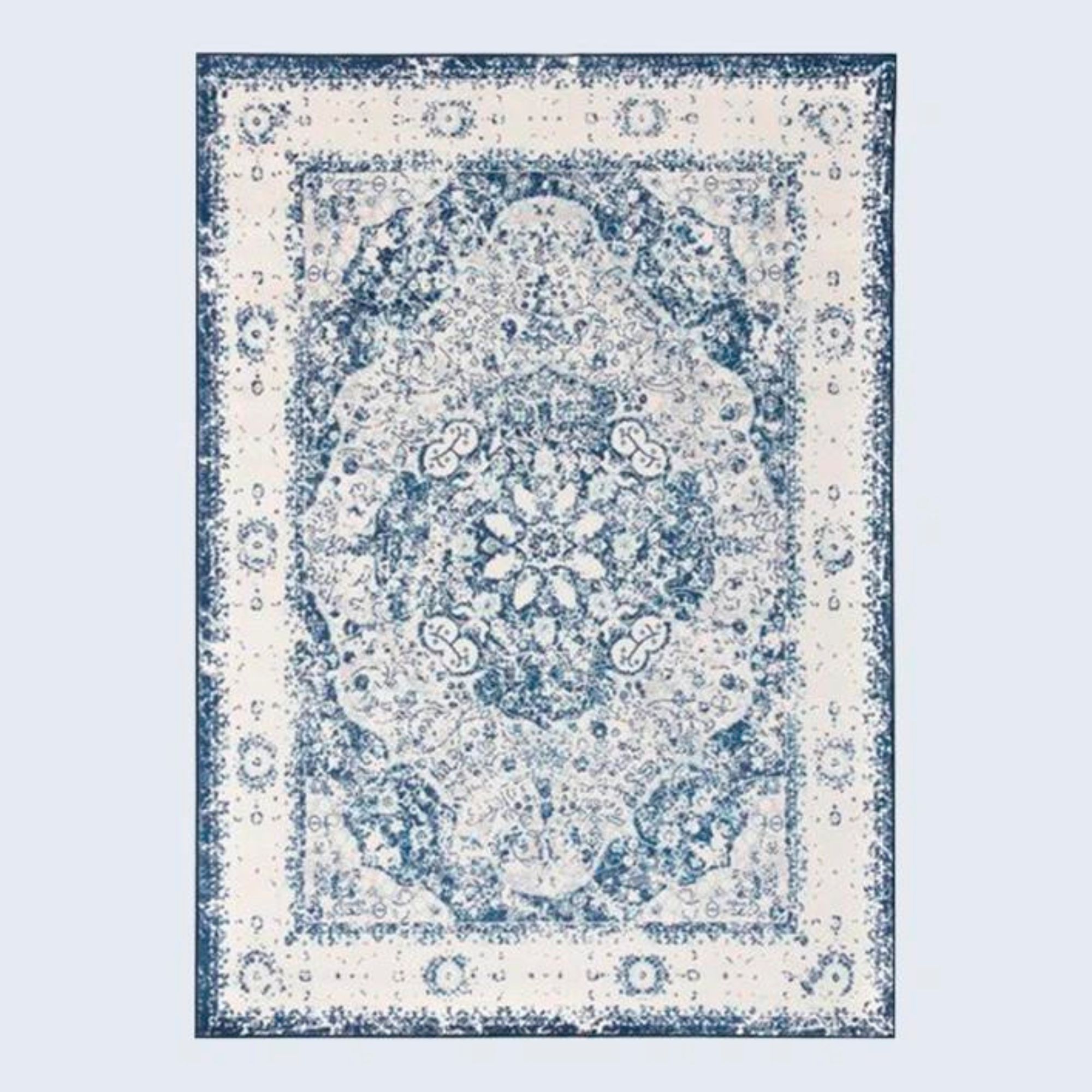How much of your couch should sit on the rug? 5 key points to consider according to designers
Wondering how much your couch should sit on a rug, if at all? Designers share the ultimate guide to help you get it right
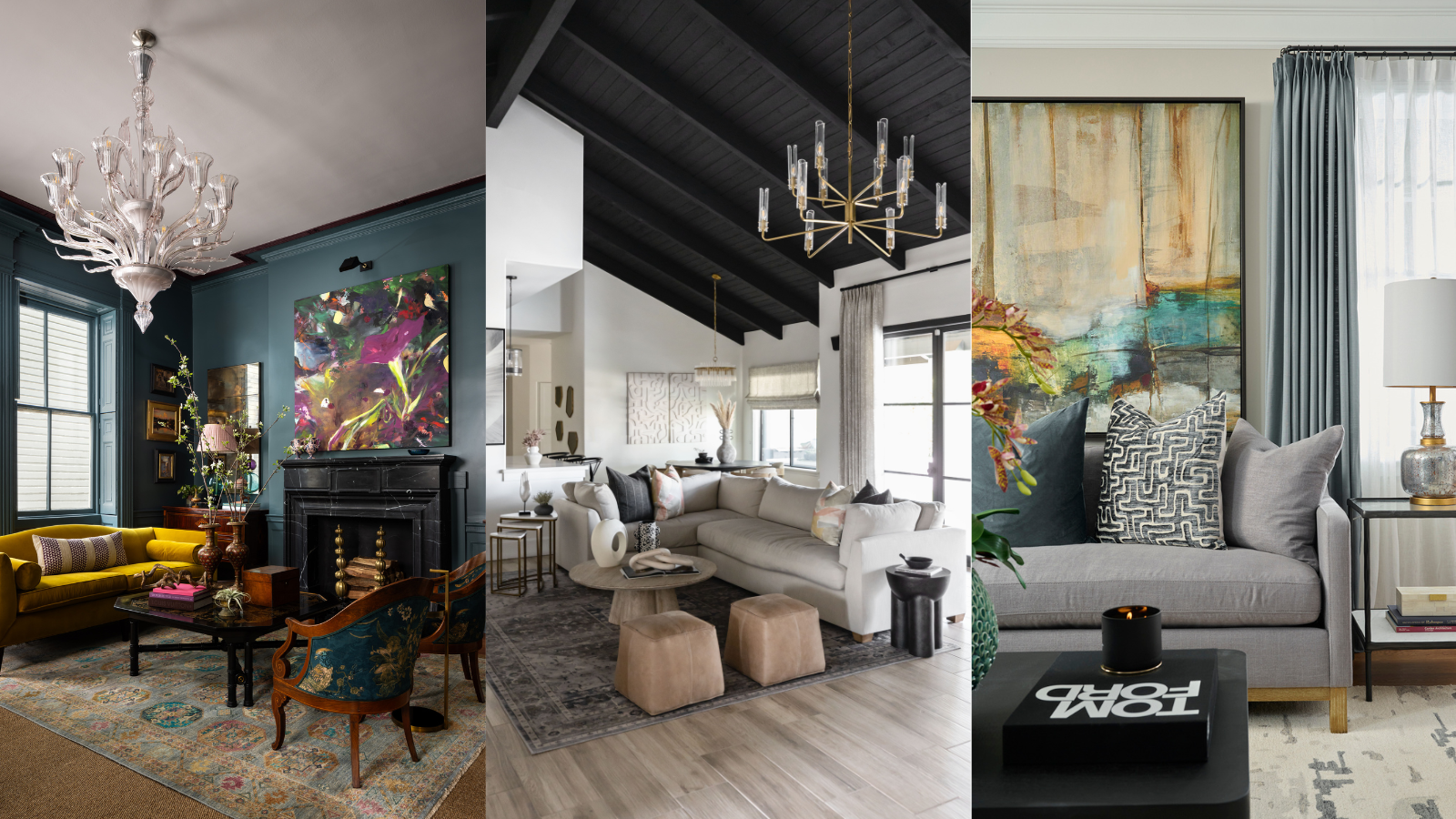

Living room layouts can be tricky to navigate. They are often such hardworking spaces that wear a lot of hats and need to work for everyone who uses the space. And although not a piece of furniture, a rug is a main player in your layout and the positioning can make or break a room.
There's plenty to consider when choosing the best spot for your rug, but one of the main questions asked is 'Should your couch sit on top of the rug?' and then more specifically, how much of your couch should sit on top of the rug? Should it even be sitting on the rug at all?! There's lots to consider, so we asked designers to help you decide what's going to be best for your living room.
How much of your sofa should sit on the rug?
As is often the case with interior design conundrums, how much of your sofa should sit on the rug, if at all, depends on a multitude of factors; from the room size and configuration to the style of your couch and rug you have chosen. Focusing on living room seating, essentially, there is no right or wrong answer but many a guideline to follow...
1. Consider the scale of both room and rug
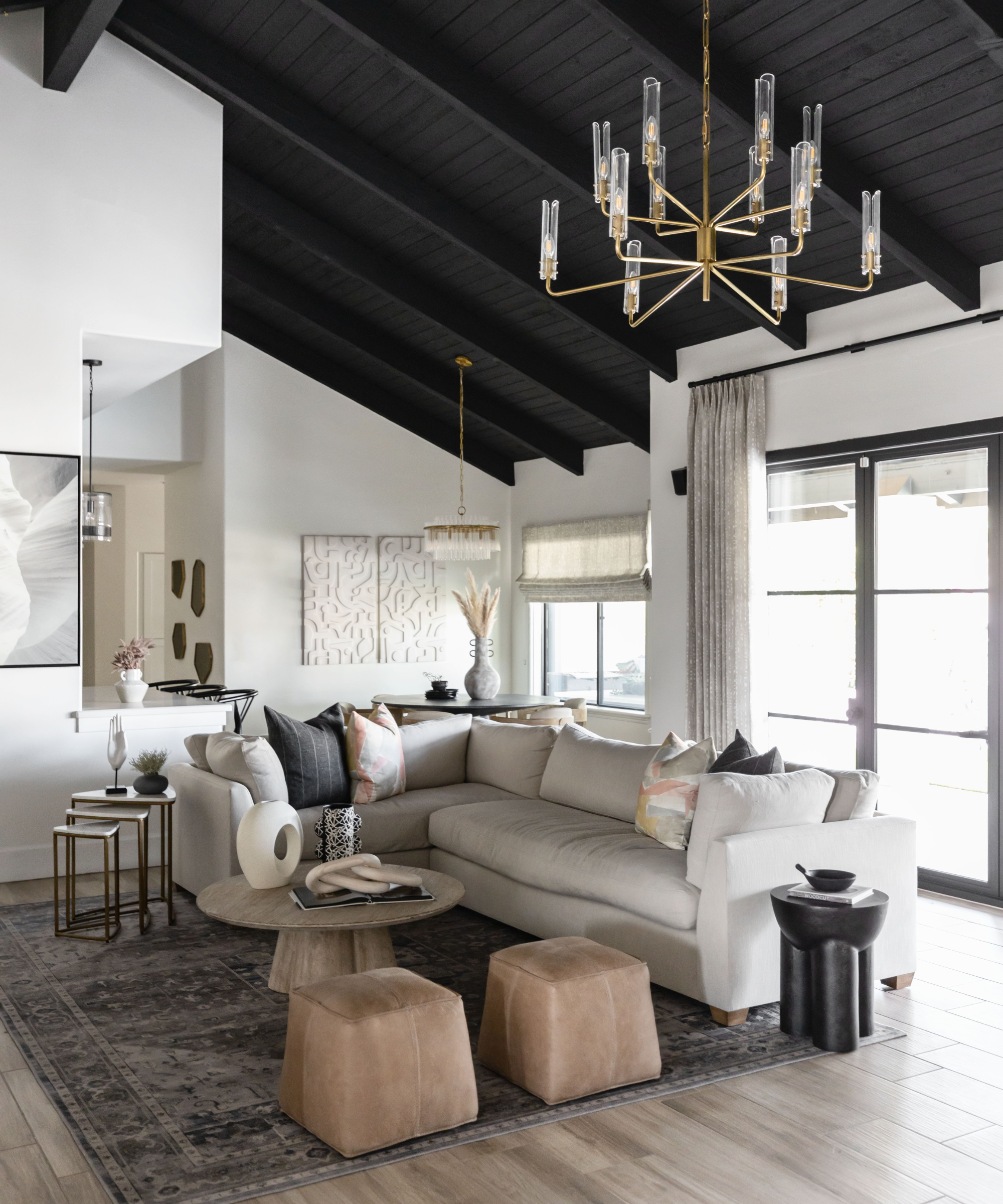
The size of your living room will impact your choice of couch and it is important to bear in mind when deciding how far the rug belongs under the sofa too. 'A well-placed rug can define a seating area, enhance cohesion, and improve balance and flow,' begins Lauren Lerner, CEO and Founder of interior design firm Living with Lolo. 'The rug's size is key; it should ideally fit at least the couch's front legs. This setup unites the furniture, preventing a fragmented look.'
Essentially the rug acts as a frame. If you are working with a couch for a small living room and have less room to work with, keep one third of the couch on the rug as a minimum. Los Angeles-based interior designer, Victoria Holly agrese with Lauren about this two front leg rule, since it 'helps unify the seating area while keeping in mind a sense of openness around the furniture,' says Victoria.
Should you have ample space to work with, you may want to anchor the couch in it furthermore, so that it does not fade into the background. Do this by going full hog. 'In larger rooms, I often place the entire sofa on the rug to define a well-scaled and grounded space,' continues Victoria.
2. Think about proportions and the 'relationship' between furnishings
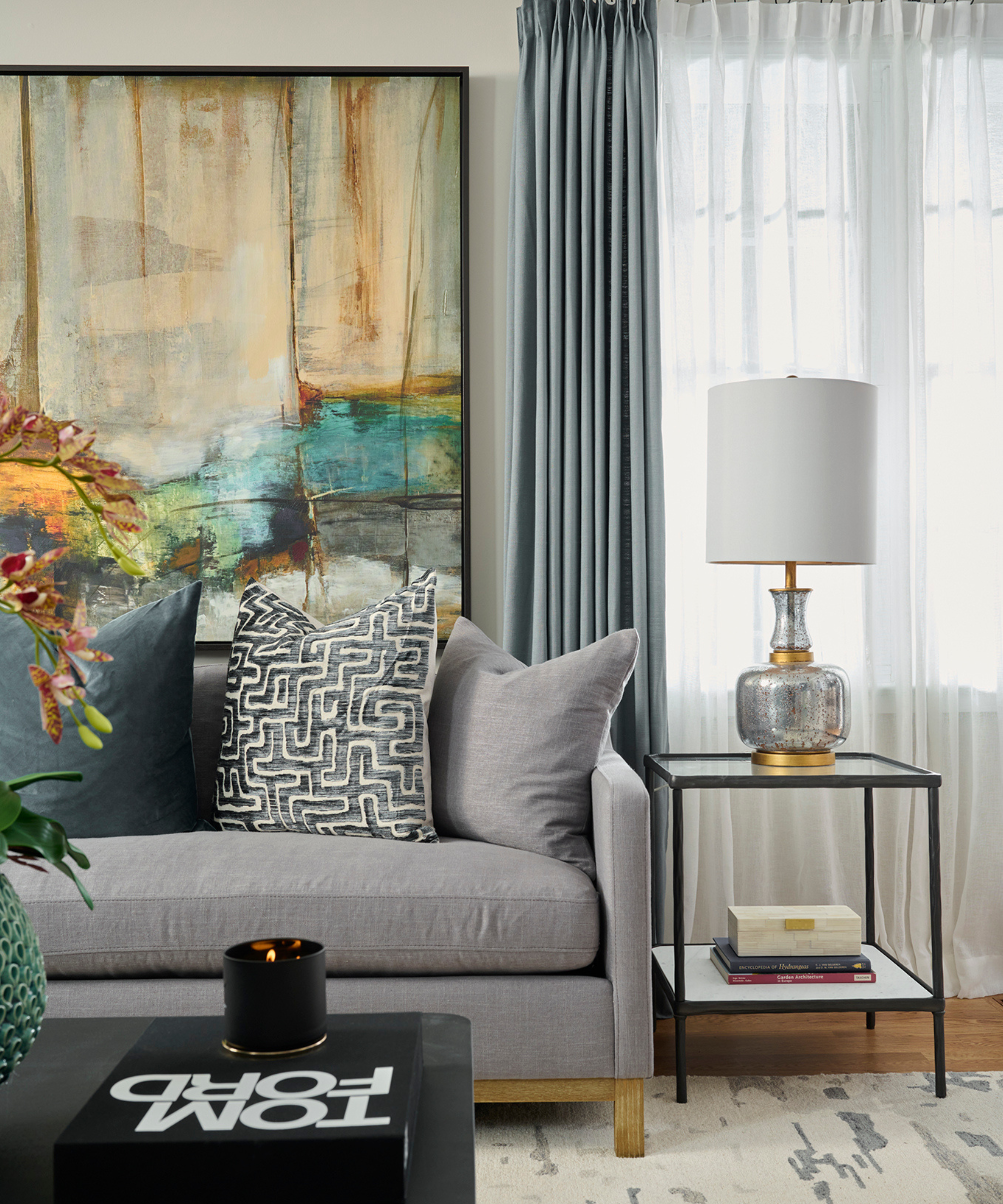
As well as working to the scale of your room and of the rug, fine-tuning the space to balance the overall proportions of the different living room furniture will serve a cohesive and welcoming finish.
Design expertise in your inbox – from inspiring decorating ideas and beautiful celebrity homes to practical gardening advice and shopping round-ups.
'Space planning is key here,' says Amy Pigliacampo, founder of Amy Pigliacampo Interiors. 'Sofa placement is really dependent on the overall proportions of the sofa relative to the rug and room size. We like to use rugs as our base to create the zone and then establish furniture placement based on those goals.'
And of course, the best position for the rug and sofa comes down to the style of both as well as the style and size of the room. 'It really has to do with the relationship between the rug, the room and the sofa; if we need the rug to accommodate a larger area, it's possible that the sofa might just come up to the rug with an intentional gap but these are very specific case by case circumstances,' continues Amy. 'The biggest mistake we see are rugs that are too small relative to a sofa.'
3. Keep a natural flow around the rug
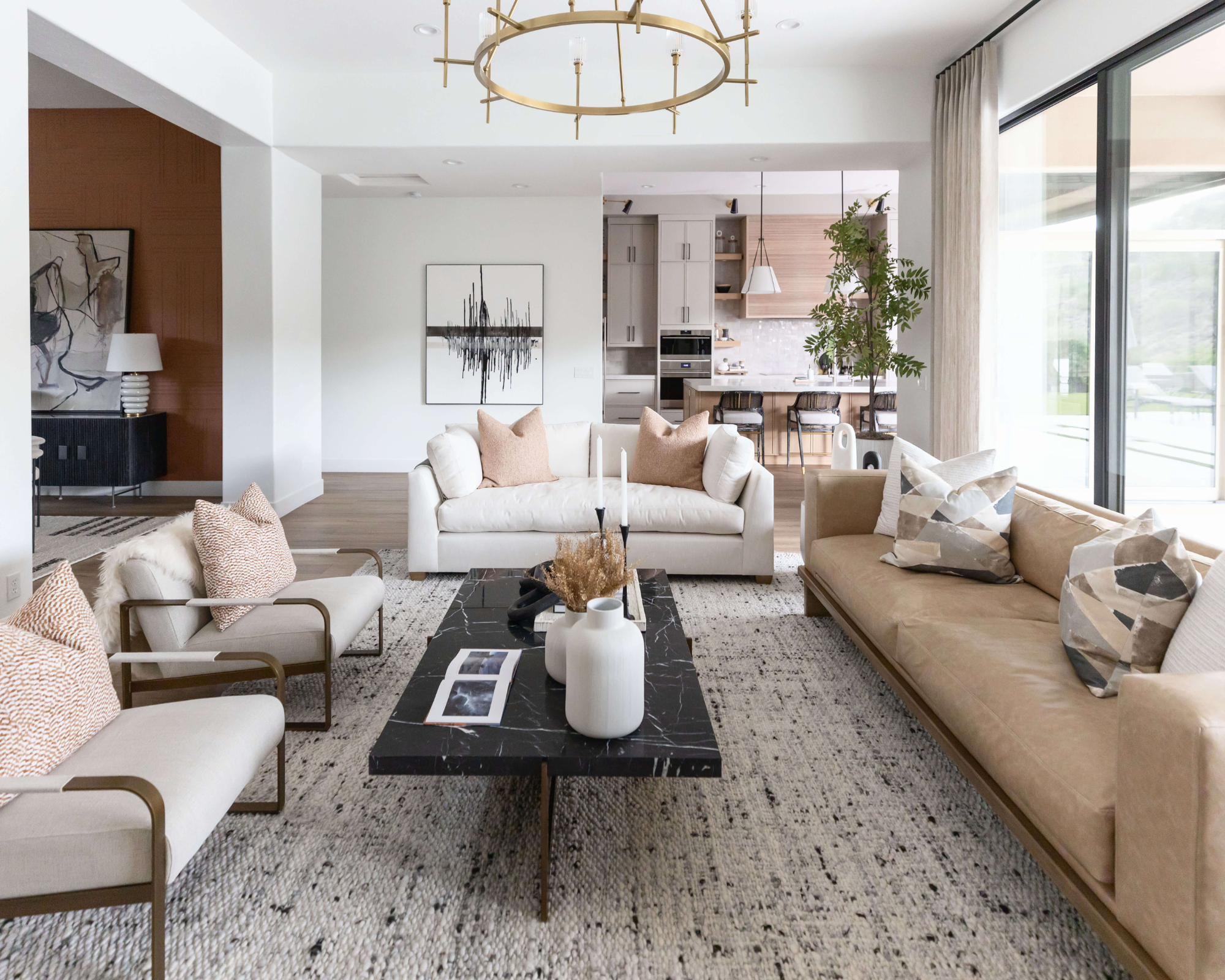
Naturally, furniture directs the flow of traffic around a room and keeping walkways clear is one of the key things to consider when positioning your couch – and you need to keep this in mind when finalizing the placement of your rug too. 'Also, consider traffic flow; the rug should allow comfortable movement without blocking paths,' notes Lauren.
You may have a particularly long living room, or one with various alcoves to consider, so depending on the room shape and any surrounding furniture, this may mean you pull more of the rug underneath the couch or leave more on show. Either way, ensure the rug does not impede unnaturally on walkways. More generally speaking for the couch, you want to 'avoid placing it too close to walls to promote conversation and movement throughout the room,' echoes Victoria.
Victoria offers some specific measurements to keep in mind: 'To help determine the right size rug for your space, I recommend keeping in mind hardwood flooring space around your rug at 12” to 18” wide.'
4. Look to your room's style
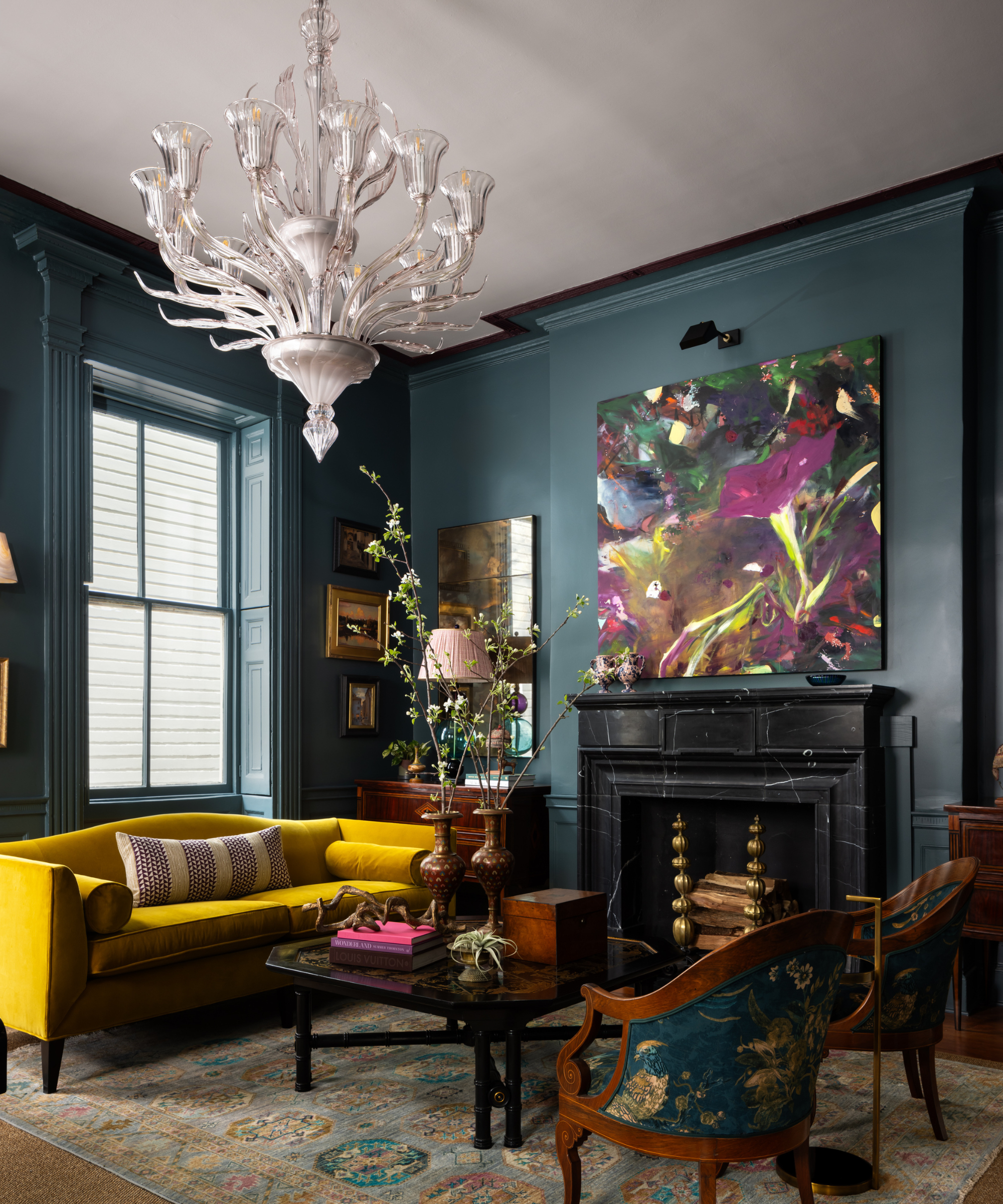
CSOL Showhouse in Charleston, SC, Stylist: Michael Mitchell
Scale plays an important part in interior design not just from a measurement perspective, but also to design depth, and the finished look you are trying to create for your room will influence how much of your sofa sits on the rug too. For example, a living room that wants more energy might want to keep at least two-thirds of a colorful rug on show, whilst some shapes merit accentuating too.
'A sofa doesn’t need to rest on a rug if you have an abstract or unusual shaped rug where you want to appreciate the edges a bit more,' adds Victoria Holly. 'Or in some very small spaces where you want to appreciate the hardwood flooring details.'
As with anything in interior design, do not hesitate to bend the rules when styling a sofa, with your rug. Consider your personal interior design style and how polished or relaxed you want the space to appear at the core of your decision. 'For a formal look, a larger rug fully under the couch and seating gives a complete, sophisticated appearance,' adds Lauren. 'A smaller rug under just the coffee table can feel lighter but might lack cohesion.'
5. Check the overall balance, harmony and comfort
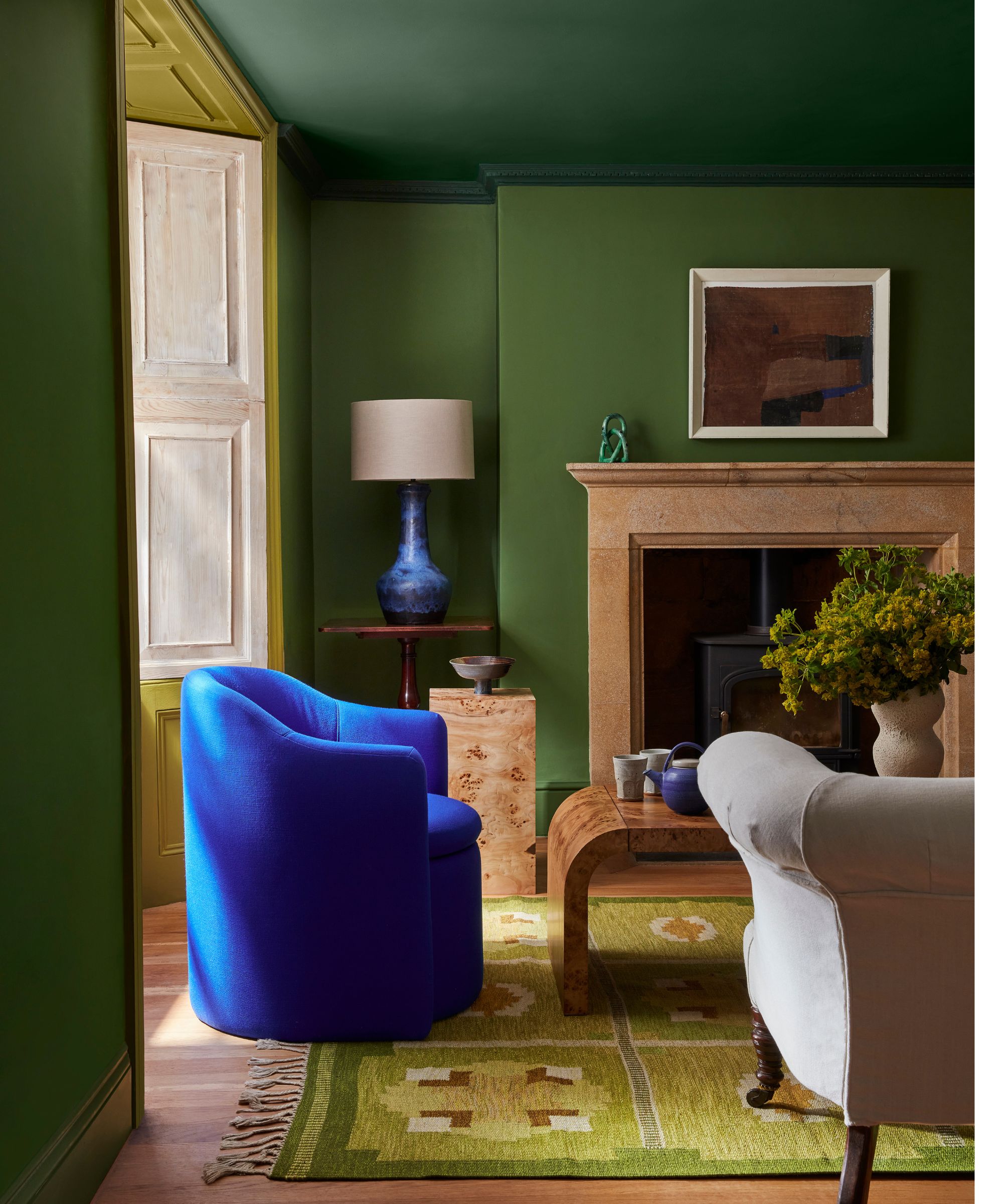
How all of these factors come into play will shape your final design movements. Consider visual and physical comfort, as well as style and practicality.
'Generally, a rug defines a space in a room,' says Amy Kalikow, founder of Amy Kalikow Design. 'Having all the furniture fit properly on the rug is a rule of thumb for our design. It makes the room feel cohesive and defined.' Depending on how your floors lie, it might be necessary to have either the full rug under all four sofa legs or no rug at all. 'Additionally, if a couch is part on and part off a rug, there could be balancing issues which makes comfy seating problematic,' continues Amy.
You might have multiple couches, for instance, in an open-plan living room. If this is the case, and they are spread out, be strategic with which seat you want to be more of the focus Victoria Holly shares. 'If you have more than one sofa, ideally both sofas have their front legs on the rug to help ground the room. But if for whatever reason given the layout and flow of the room, only one sofa can have its legs on the rug, then pick the larger and more dominant sofa.'
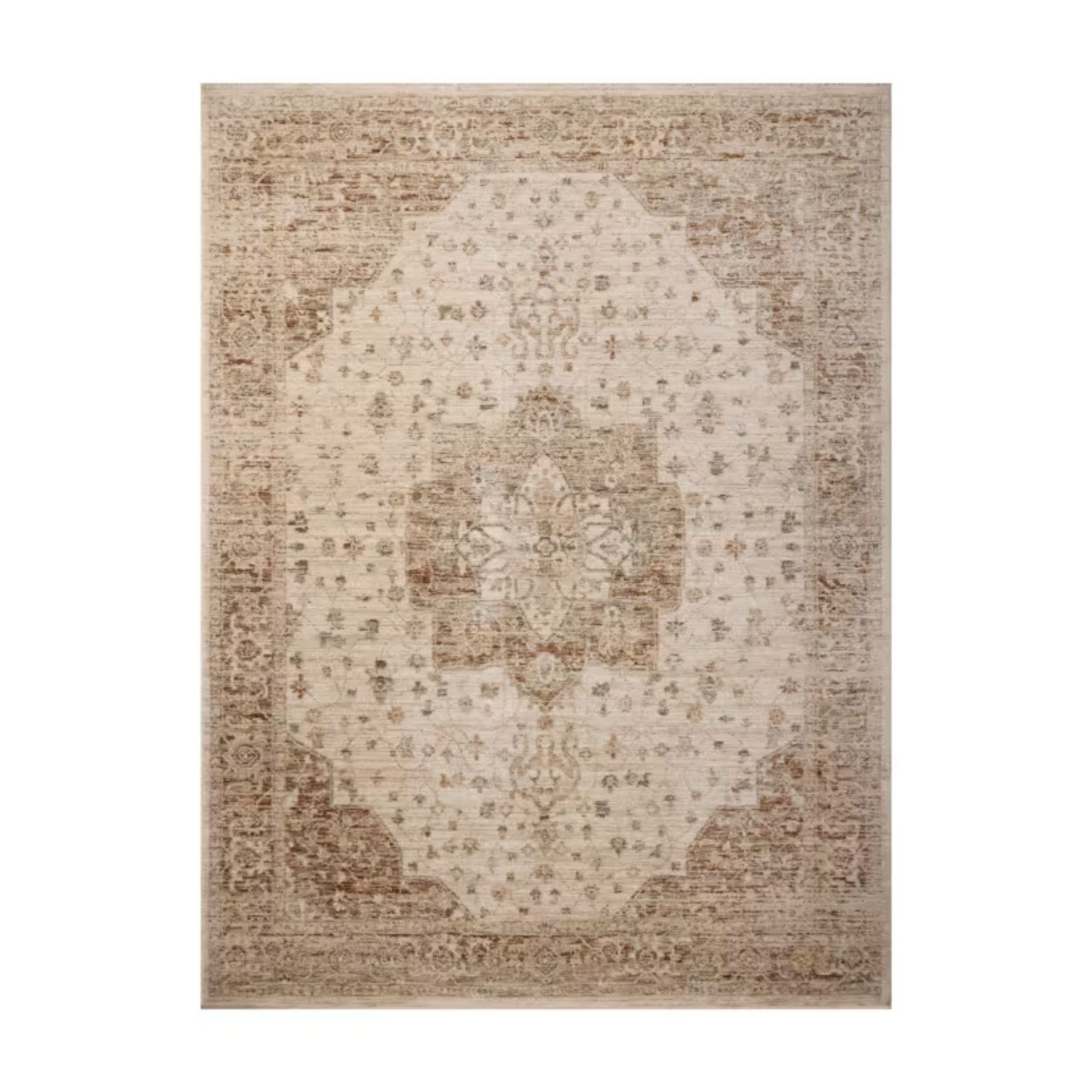
If you are after a large area rug for multiple sofas to sit on top of the fail-safe approach is to keep it fairly neutral so it doesn't totally dominate the room. This rug from designer Joanna Gaines' collab with Loloi is the perfect amount of pattern and texture to be a base for furniture.
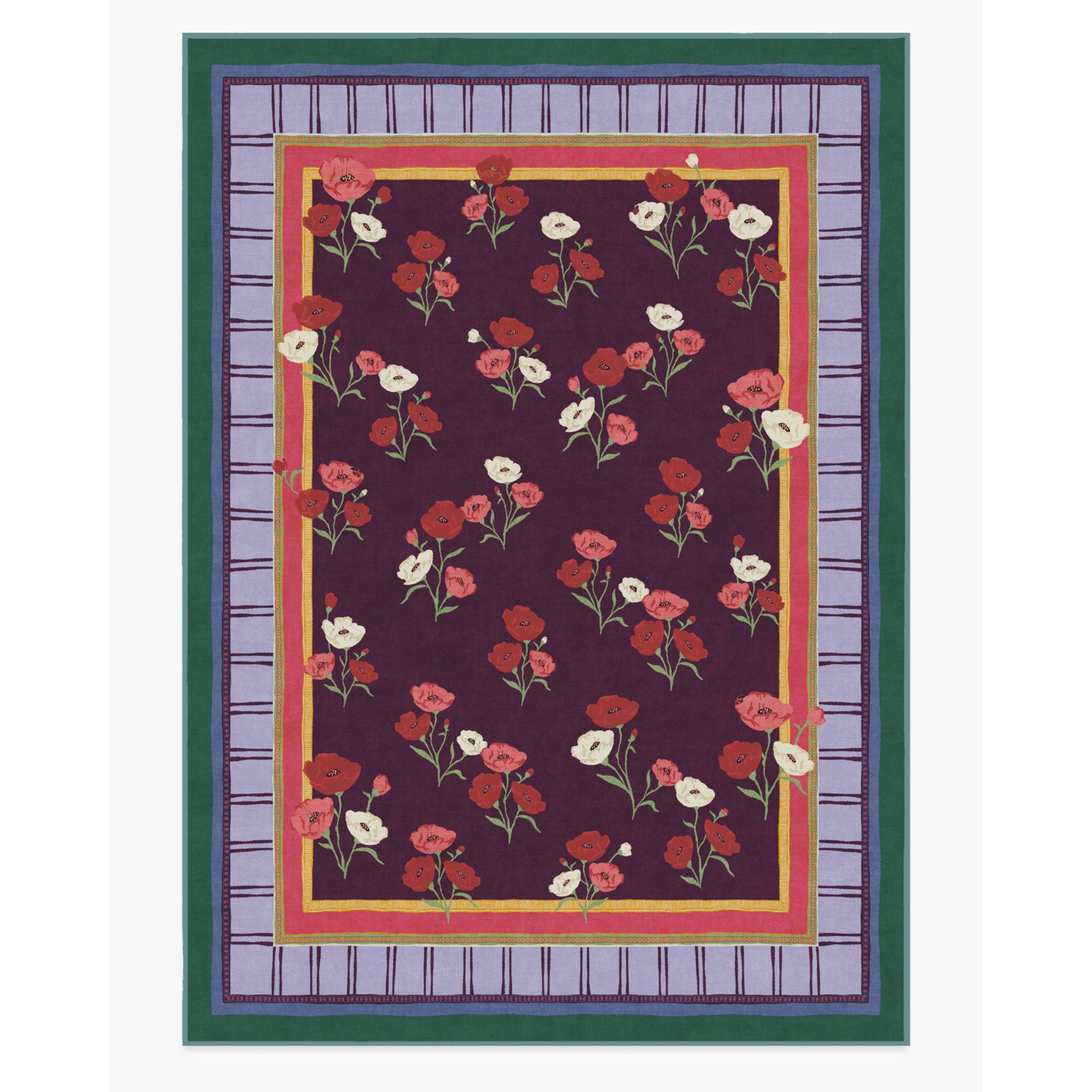
If you are after something bolder, Iris Apfel's collection with Ruggable is filled with beautiful statement, yet liveable designs and colors. This darker color scheme would work nicely with neutral furniture to ground the room but not overwhelm it.
When tackling how much of your couch should sit on a rug, focus on how scale, proportion, flow, and feel of the space all come into play. When in doubt, consider the two front couch leg rule and see how it sits in your space, you will know when you have made the right design choice.

Camille is the former deputy editor of Real Homes where she covered a broad range of topics, including house tours, small space design, and gardens. She studied English language and Italian at the University of Manchester and during a year abroad studying linguistics and history of art in Bologna, Italy she started documenting her adventures and observations in a blog. Camille is always creating and spends her downtime painting, taking photos, traveling, and writing short stories.
